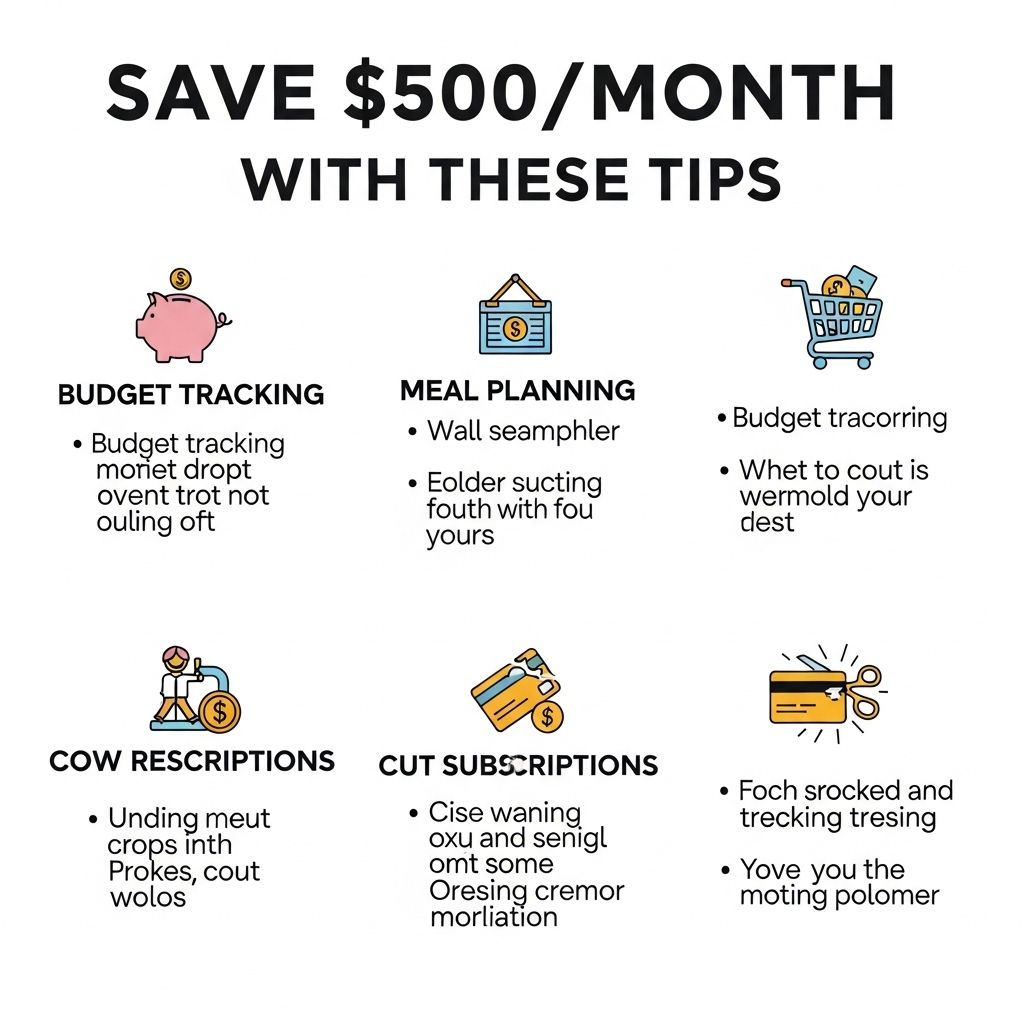In today’s fast-paced world, managing finances effectively can be a challenging task, especially with rising costs of living and unexpected expenses. However, there are numerous strategies and practices that can help you save money without sacrificing your quality of life. This article will delve into practical tips that can help you save up to $500 a month, providing you with the knowledge to take control of your finances.
Understanding Your Spending Habits
The first step to saving money is to understand where it’s going. By tracking your expenses, you can identify areas where you can cut back. Here are some tools and methods you can use:
- Budgeting Apps: Utilize apps like Mint, YNAB (You Need A Budget), or PocketGuard to keep tabs on your spending.
- Spending Journals: Write down all your expenditures over a month to see where your money is going.
- Bank Statements: Regularly review your bank statements for recurring charges.
Cutting Down on Monthly Bills
Monthly bills can eat up a significant portion of your budget. Here are some tips to reduce those costs:
1. Negotiate Your Bills
Often, service providers may be willing to lower your rates. Consider negotiating:
- Phone and Internet Services: Call your provider and inquire about any available discounts or lower rate plans.
- Insurance: Shop around for better rates on car, home, or health insurance.
- Utilities: Ask your utility providers about budget plans or discounts for low usage.
2. Cancel Unused Subscriptions
It’s easy to lose track of subscriptions. Consider the following:
- Look for monthly subscriptions you’ve forgotten about.
- Assess whether you truly use each service on a regular basis.
- Utilize free trials wisely and remember to cancel before they start charging.
Smart Grocery Shopping
Food costs can quickly add up, but with strategic shopping, you can save significantly:
1. Meal Planning
Planning meals in advance can prevent impulse purchases and food waste:
- Create a weekly meal plan and shopping list.
- Stick to your list while shopping.
- Incorporate leftovers into your plan to minimize waste.
2. Use Coupons and Loyalty Programs
Take advantage of discounts:
- Sign up for store loyalty programs.
- Use coupon websites and apps.
- Look for manufacturer coupons before shopping.
3. Buy in Bulk
Purchasing items in bulk can lead to significant savings:
- Buy non-perishable goods in larger quantities.
- Join warehouse clubs like Costco or Sam’s Club.
- Share bulk purchases with friends or family to split costs.
Transportation Savings
Transportation can be a large expense, but there are ways to cut back:
1. Public Transportation
If available, public transportation can be more economical:
- Consider getting a monthly pass if you commute regularly.
- Evaluate the cost of buses, trains, or trams as opposed to driving.
2. Carpooling
Sharing rides can save money on gas:
- Join a carpool with coworkers or neighbors.
- Utilize apps that connect riders with drivers.
Reducing Entertainment Expenses
Entertainment can be one of the first areas to cut back:
1. Explore Free Activities
Look for free or low-cost activities in your area:
- Visit local parks, museums on free-entry days, or community events.
- Take advantage of free streaming services.
2. Limit Dining Out
Eating out can drastically decrease your savings:
- Set a budget for dining out each month.
- Try cooking at home or hosting potluck dinners with friends.
Reviewing Financial Goals
Regularly reviewing your financial goals can keep you motivated to save:
1. Set Specific Goals
Define what you’re saving for:
- Short-term goals like an emergency fund.
- Long-term goals such as retirement or a home down payment.
2. Automate Your Savings
Set up automatic transfers to your savings account:
- Allocate a certain percentage of your income to savings.
- Consider using high-yield savings accounts for better interest rates.
Utilizing Technology for Savings
Incorporating technology can help streamline your savings efforts:
1. Financial Management Software
Software can help visualize and manage your finances:
- Utilize tools like QuickBooks or Personal Capital.
- Track investments and savings goals effectively.
2. Mindful Spending Apps
Apps can alert you to excessive spending:
- Set thresholds for spending categories.
- Receive alerts when nearing your budget limits.
Conclusion
By implementing these practical tips and strategies, saving $500 a month is within reach. Start by analyzing your spending habits, cut unnecessary expenses, and take advantage of technology to keep you on track. Remember, it’s not about depriving yourself but making conscious choices that lead to financial freedom and stability. Your future self will thank you for taking these steps today!
FAQ
How can I save $500 a month on my expenses?
You can save $500 a month by creating a budget, cutting unnecessary subscriptions, shopping smarter, and meal prepping to reduce food costs.
What are some effective budgeting tips to save money?
Effective budgeting tips include tracking your spending, setting specific saving goals, using apps to manage finances, and reviewing your budget regularly.
Is it possible to save money on groceries?
Yes, you can save money on groceries by planning meals, buying in bulk, using coupons, and choosing store brands over name brands.
How can I lower my utility bills?
Lower your utility bills by using energy-efficient appliances, unplugging devices when not in use, and adjusting your thermostat to save on heating and cooling costs.
What are some tips to save on transportation costs?
To save on transportation costs, consider carpooling, using public transportation, maintaining your vehicle, and planning trips to minimize fuel consumption.
How can I save on entertainment expenses?
You can save on entertainment by exploring free local events, utilizing library resources, and opting for home movie nights instead of going out.




